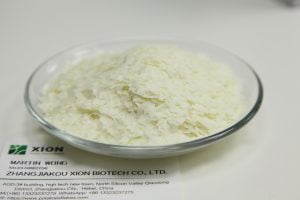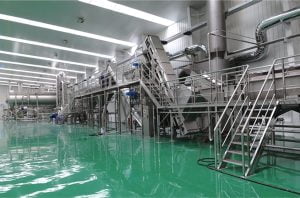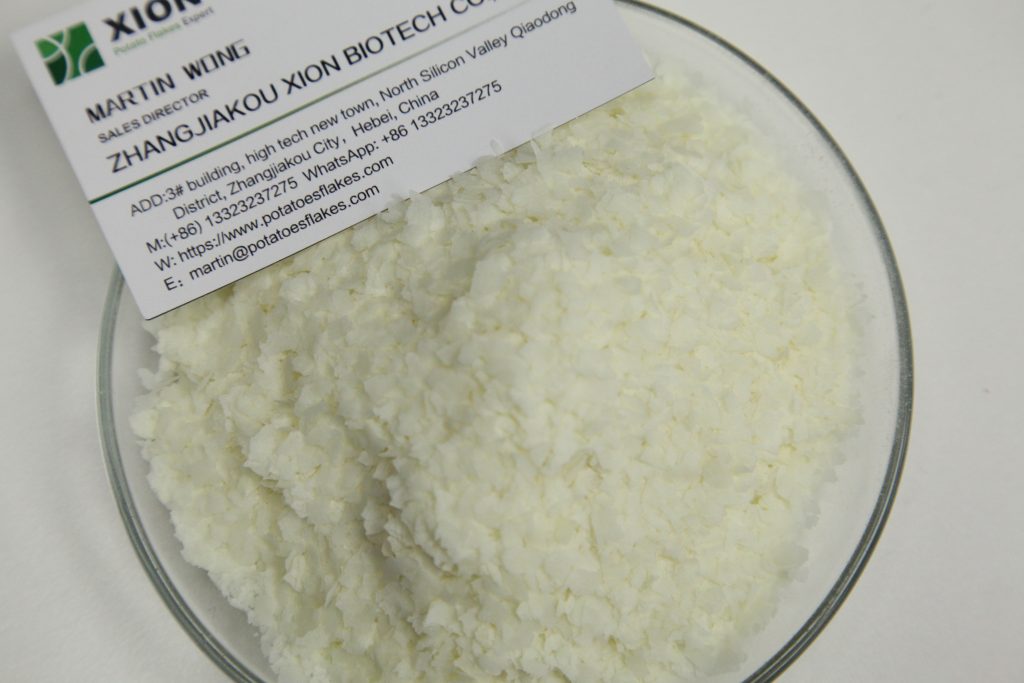洋芋片 是經過脫水、乾燥後得到的產品, 產生片狀或細粉狀物質. 它們統稱為馬鈴薯全粉. 生產過程中, 馬鈴薯細胞的完整性得以保留, 保留馬鈴薯的天然風味.

什麼是馬鈴薯片?
洋芋片 是一種直接使用的熟脫水馬鈴薯食品和原料, 糧食生產, 和其他產品.
很多人把馬鈴薯片稱為馬鈴薯粉, 馬鈴薯粉, 或者 馬鈴薯泥粉, 但它們實際上是不同的馬鈴薯產品.
一般來說, 馬鈴薯泥粉有三種類型: 馬鈴薯顆粒, 馬鈴薯, 和磨碎的馬鈴薯片 (有些人也稱之為土豆粉).
馬鈴薯片很容易透過視覺辨別. 它們看起來像雪花一樣, 主要是白色等顏色, 淡黃色, 和黃色. 有些馬鈴薯片也有紅色和紫色的. 馬鈴薯片在當地的超市和市場上很少見到,因為它們一般用作休閒食品的配料, 焙烤食品, 和其他產品.
以下, 我們將對這三種馬鈴薯產品進行簡單比較.
顆粒劑:
- 採用熱風乾燥技術生產.
- 以馬鈴薯細胞單體顆粒或多個細胞的聚集體形式存在.
- 簡稱顆粒全粉.
薄片:
- 採用滾筒乾燥技術生產.
- 不規則薄片範圍為 0.1 到 0.25 毫米厚和 3 到 10 直徑毫米.
- 我們一般用20目篩子, 其平均直徑為 3 毫米.
麵粉:
- 我們可以透過研磨脫水馬鈴薯產品來製成精細的馬鈴薯粉
- 簡稱細粉.
產量: 三種全粉中, 馬鈴薯, 顆粒劑在實際生產上產量最高. 馬鈴薯全片是目前我國的主要產品. 許多歐美製造商生產的馬鈴薯顆粒比馬鈴薯還多.
馬鈴薯片是如何製成的? 細節
馬鈴薯片的生產過程有點複雜,包括原料的選擇, 洗滌, 脫皮, 選擇, 切片, 漂洗, 預煮, 冷卻, 蒸, 糖化, 脫水, 和乾燥.
在整個過程中, 最重要的步驟是 原料選擇, 馬鈴薯去皮, 色彩保護, 和乾燥.
原料選擇:
- 關鍵考慮因素: 馬鈴薯品種的選擇對於馬鈴薯薯片加工至關重要. 品種應具有高乾物質及低還原糖及有害物質含量, 發芽最少且顏色淺. 他們還應該沒有重大疾病.
馬鈴薯去皮:
- 重要性: 無論採用何種加工方法, 馬鈴薯需要去皮才能獲得高品質的馬鈴薯片. 馬鈴薯皮含有龍葵素和硝酸鹽等有毒化合物. 剝皮會降低這些化合物的含量, 確保馬鈴薯薯片的安全.
- 常用方法:
- 傳統的機械去皮方法導致馬鈴薯損失慘重, 範圍從 15% 到 50%.
- 蒸氣去皮是最有效的方法, 只造成 4% 到 6% 損失. 它的效率也是最高的, 處理最多 3000 每個土豆 6 秒.
色彩保護:
- 關鍵方面: 顏色保護對於馬鈴薯薯片的外觀和品質至關重要.
- 醌化合物的形成: 去皮和切片等加工步驟可能會導致細胞損傷, 導致多酚氧化酶與多酚反應形成醌化合物. 這些醌類化合物可以進一步與馬鈴薯細胞中的胺基酸基團反應, 導致褐變.
- 有效方法:
- 最有效的方法是結合使用護色劑來控制用量,同時確保有效性. 例如, 檸檬酸和 D-異抗壞血酸鈉的組合可增強顏色保護. 結合維生素C, 植酸, 檸檬酸, L-半胱氨酸有效抑制褐變, 實現最佳的色彩保護.

將土豆泥晾乾
- 熱風乾燥和真空冷凍乾燥是馬鈴薯泥乾燥的兩種主要方法.
滾筒乾燥:
- 廣泛使用的方法: 滾筒乾燥是馬鈴薯片乾燥的主要方法.
- 乾燥溫度的影響: 熱風乾燥馬鈴薯片中還原糖的含量受乾燥溫度的影響很大. 溫度升高時, 還原糖含量先上升, 然後跌倒. 同時, 隨著乾燥溫度的升高,維生素C含量下降.
- 缺點: 滾筒乾燥既簡單又經濟高效, 它會破壞馬鈴薯的微觀結構, 抑制水分和油滲透並降低內聚力. 它還會導致馬鈴薯白度下降以及不同程度的褐變和氧化.
如何在家製作洋芋片?
工業規模生產需要專門的設備和工藝來確保適銷對路的質量. 然而, 您也可以在家中製作少量. 但手工製作洋芋片非常困難, 結果會更像馬鈴薯粉. 你仍然可以嘗試這個:
- 選擇新鮮土豆.
- 將馬鈴薯去皮.
- 將馬鈴薯蒸或煮至軟.
- 將煮熟的馬鈴薯搗成泥.
- 將馬鈴薯泥薄薄地舖開.
- 烘烤或微波爐至乾燥.
- 將乾燥的馬鈴薯泥收集並研磨成馬鈴薯.
筆記: 馬鈴薯與馬鈴薯片的比例通常為 5:1, 意義 5 公斤馬鈴薯產量約 1 公斤馬鈴薯.
